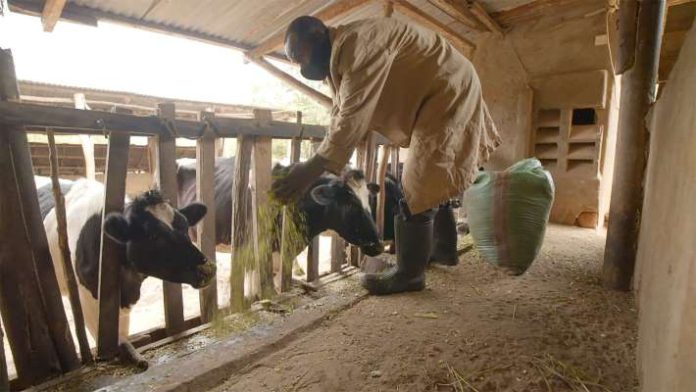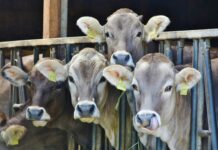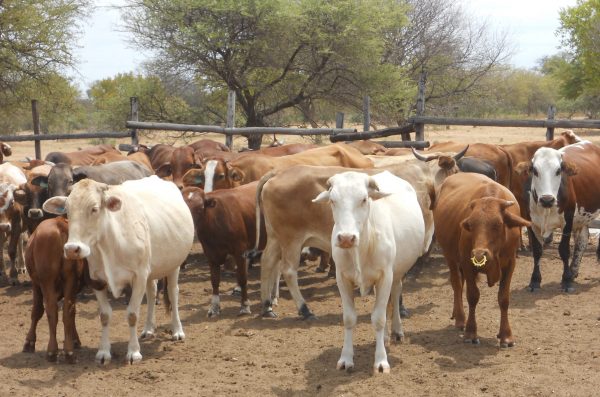
We all know the adage, ‘you are what you eat’ – how healthy eating and nutritious food result in us being healthy, well-nourished humans. But, maintaining the nutrient quality of our food, throughout a complex food supply-chain, is far from a straightforward task. In the second episode of BBC World News and bbc.com series, Follow the Food, we see how many farmers and scientists have begun to look at the start of the chain to see if we can improve what and how we feed our food, and whether we can make healthier, nutrient rich ingredients that give us the nourishment we need.
Soil Health
Improving the quality of crops is something that all farmers strive for but trying to do that, at the same time as being a responsible custodian for the wider environment, often involves a trade-off. In Ohio, USA, corn and soy farmer Corey Atley, is trying to do both thanks to some clever innovation.
Good, healthy soil contains billions of microorganisms, including things like bacteria and fungi, which can play a vital role in the nourishment of plants. However, some forms of intensive farming can degrade soil quality and kill these helpful organisms.
By using a new innovation in farming known as biological inoculant, Corey Atley has found a way of using about 25% less synthetic fertiliser than is commonly used in modern farming. Biological inoculant is a mixture of microscopic, live bacteria and fungi that is added to a plant’s growth cycle to help it access better nutrients from the soil as it grows.
Explaining how it works, Atley said: “When you’re dealing with phosphorus, potassium, calcium and magnesium, the metal bond is so strong, the soil doesn’t want to release the nutrients to the root of that plant. When you put live organisms into soil, it’s actually going to break that bond and poop it back out, making it readily available to the plant. Effectively, what we are trying to do is break apart more of what is already in our soil, instead of constantly adding more to it.”
Livestock
Kenya is the largest cattle milk producer in Africa, producing over 3.5 billion litres of milk a year. However, whilst demand is growing, climate change is threatening output.
Kenya’s dairy industry is made up of over one million smallholder dairies, with 80% of them having fewer than five cows, and the grass variety that they’ve been traditionally fed with is susceptible to pests, diseases and drought.
Dr Donald Njarui, principal research scientist at Kenya Agricultural and Livestock Research Organisation (KALRO) explained: “Most farms in Kenya keep Friesian cows, which are a high yielding animal, but the milk production here is still very low. It ranges from about eight to nine litres, per animal, per day, when Friesians are able to give up to 30, 40 or even 50 litres. The main problem has always been the feed.
“The only grass in Kenya available in the quantity required for farming is Napier, but Napier is susceptible to pests and diseases, so we began looking at what other countries are doing and found that Brachiaria is one of the grasses that could solve that problem.”
Dr Njauri and his team discovered that Bracharia grass was successfully being used in Brazil but its origins were surprisingly close to home.
He continued: “We know that South America acquired Brachiaria grasses from Eastern Africa back in the 1940s and 1950s, but we have not exploited the potential of those grasses, as they are not cultivated here.”
After repatriating Brachiaria to Kenya, and distributing it across its vast network of smallholders, the varieties have further developed and are delivering remarkable results. Farmers are seeing an increase in milk production of around 15%, as well as reporting higher body weight, butter fat and protein content. All good news for human health in the right quantities.
Meat
In Cornwall, UK, Rhys Morris and his family have been farming their 200-acre cattle farm for over three years. They’re not only focused on how much food ends up in the stomachs of their herd, but also how changing and managing the entire ecosystem the herd grazes from can improve the quality of the meat they’re producing.
“There are a number of studies that show that nutrient density in foods has dropped significantly over the last 50 years. That drop is a result of lower organic matters in the soils, and it’s only now that we’re realising the negative impact that is having on our health, the animal’s health and the planet as a whole,” said Morris.
A healthier soil produces more nutrient-rich plants for the herds to eat, improving the meat. This is enabled through a process of ‘mob grazing’. Explaining this process, Morris continued: “The idea behind mob grazing is that you give a relatively small area of acreage to the cattle at one given time, but you move them frequently. This means they’ve constantly got the ability to graze, but you’re not forcing them to over-graze.”
The make-up of Rhys Morris’s field sees a variety of plants, which is a result of an intentionally sewn mix of species known as a ‘herbal ley’. A herbal ley is great for pollinators and improving soil structure, with each different species, such as chicory or clover, drawing up different nutrients, enriching the diet of the cows.
Alongside the leys, Rhys is allowing his cattle to graze through woodland, which is an ancient practice known as Silvopasture. This provides the cattle with access to fruits, nuts, tree and leaf fodder, doubling the number of species they’re eating and resulting in the intake of a diversity of nutrients.
Morris explains: “Animals that have been born and raised on the pasture-fed system here have seen a marked improvement in the quality of taste in our product, and our customers have relayed that back to us.
“Before now, I would have quite happily eaten 500-600 gram steaks on my own. Now, with the cattle that have come through the system fully, a 600 gram steak will feed my wife, myself and our two children. By eating better quality meat, we reduce the amount of meat we’re eating and, if this nutrient density helps us do that, then that’s only going to be a benefit.”
By embracing historic grazing practices, combined with our modern understanding of the ecosystem, Morris is hoping to create a biochemically rich, pastoral system that can produce a higher quality and nutritious product more sustainably. And, if we are what our food eats, that is a sensible ambition.
—Follow the Food will air at 0130 and 1530 GMT on Saturday 29th Jan and 0930 and 2030 GMT on Sunday 30th Jan on BBC World News. To find out more or watch the episode in full, you can also visit http://www.bbc.com/followthefood and follow @BBCFuture on Facebook and Twitter for all the latest from the series.







